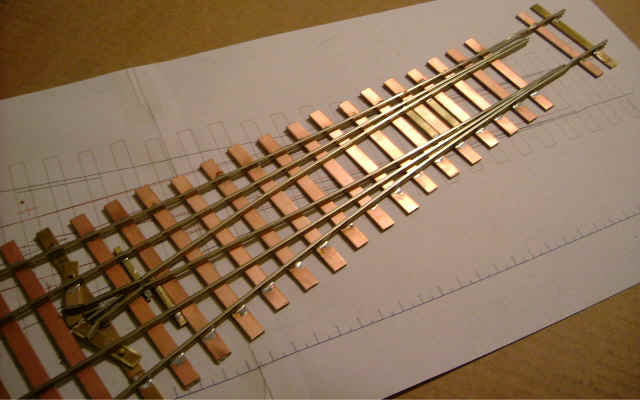The club uses a mixture of Peco, Marcway and handbuilt points. This page gives some background on how handbuilt points are constructed.

The drawings for the points are created using a cheap CAD software package. The plans are then printed out on a couple of sheets of A4.
The lengths of the sleepers are then measured off the plans. Most of the sleepers are cut from lengths of copper-clad fibre-glass sheet; the same sort of stuff that is used to make electronic printed circuit boards. The sleepers at each end of the point are made from brass strip for added strength.
Unlike most indoor model railways, the O gauge locomotives at Brambleton run off batteries rather than picking up current from the rails. This means that the fact that the running rails are electrically shorted is not a problem.
The picture to the left shows the sleepers and plans for a three way point.


